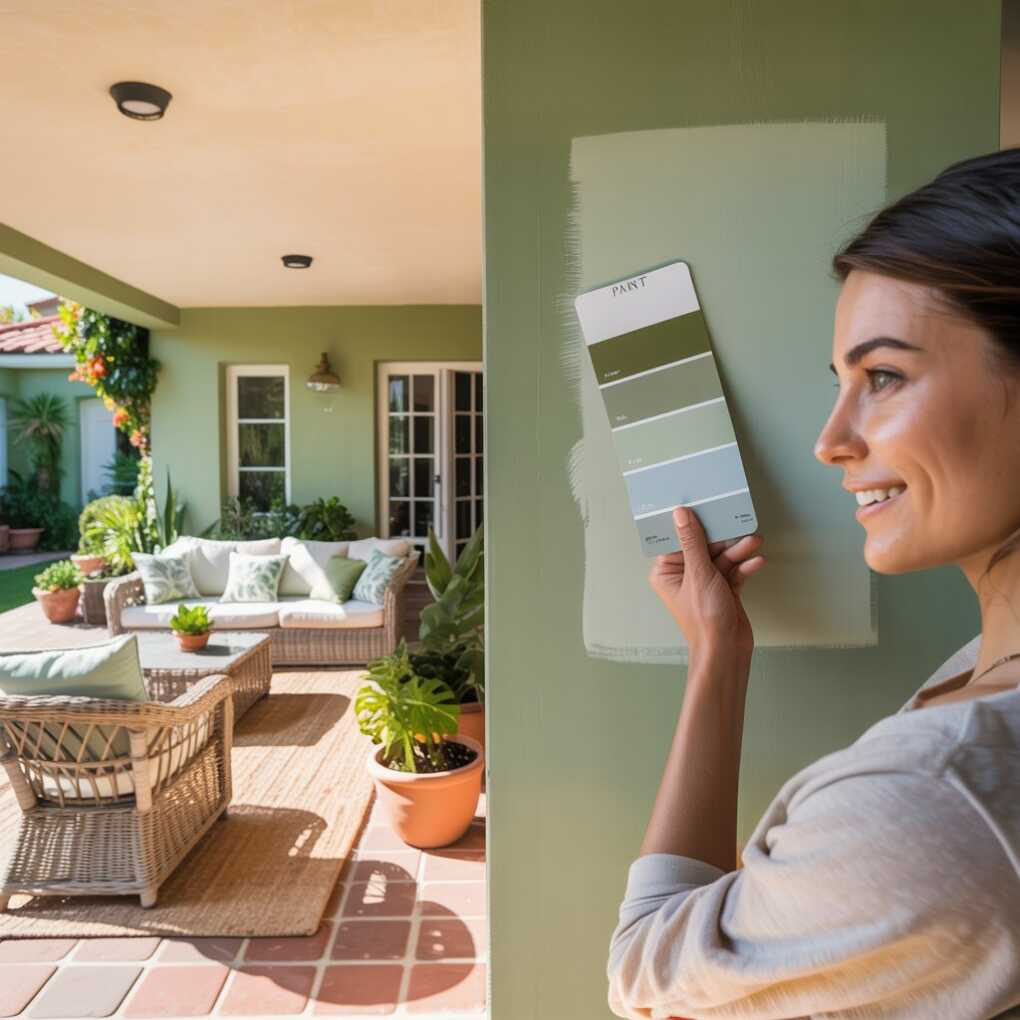Color can do more than beautify a home—it tells a story. The shades we choose for our walls, inside and out, reflect our preferences, moods, and values. From the calming neutrality of soft beiges to the confidence of a bold red front door, every color makes a statement. When thoughtfully selected, paint can bring harmony to the entire structure, reflecting a home’s inner spirit and connecting it with the external world. We will explore how purposeful paint decisions can enhance curb appeal, support emotional well-being, and align with the character of the people living within. Whether planning a full renovation or just touching up a few rooms, aligning your color choices with your home’s unique personality can elevate its entire presence.
For those looking to achieve a seamless blend of style and durability, choosing the right paint is crucial. Whether you’re aiming for a bold statement or a subtle enhancement, the right color can transform your space. It’s essential to consider not only the aesthetic appeal but also the quality and longevity of the paint. Consulting with professionals can provide valuable insights into the best options for your specific needs. For expert advice and services, truecoatpainter.com offers a range of solutions tailored to match your home’s unique personality, ensuring that both the interior and exterior reflect your vision beautifully.

Blending Aesthetic and Identity Through Strategic Color Choices
Start with the Heart of the Home: Interior Reflections
When considering a purposeful paint palette, begin from within. You live, think, relax, and engage with loved ones in your interior space. Choosing colors here should be a personal and deliberate process. The living room, often a space for relaxation and entertaining, can benefit from warm earth tones like clay, rust, or olive green that create a grounding yet inviting atmosphere. For bedrooms, many lean toward cool tones like soft blues or gentle lavenders that naturally promote calmness and rest. Kitchens do well with brighter tones such as creamy whites, yellows, or light sage, creating a feeling of cleanliness and energy. With guidance from experienced teams like Alarcon Pro Painting, homeowners can ensure that their interior choices reflect personality and enhance the space with lasting quality and cohesion.
Colors also play a psychological role. Studies show that soft greens can reduce stress, while deeper hues like navy evoke contemplation and depth. It’s not just about what looks good—how a space feels and how that feeling supports your daily life. By focusing on function, emotion, and personal taste, your interior paint becomes an extension of you, turning rooms into reflections of your routines, goals, and memories.
Bridge the Inside and Outside with Transitional Hues
Once your interior has a defined color identity, the next step is considering how those tones translate to the home’s exterior. Rather than treat them as two palettes, think of them as a continuous flow. Transitional colors such as warm greys, taupes, or muted greens can connect indoor themes and outside impressions. For example, if you use soft ocean blues in your bathroom or bedroom, consider a similar undertone for your porch ceiling or entryway bench.
Another way to build this visual bridge is through consistent accent colors. Suppose your indoor furniture or trims feature a particular walnut brown or brushed brass tone—using the same shade for shutters, garage doors, or deck railings offers subtle cohesion. The result isn’t just better design—it’s a unified experience for both occupants and visitors. Creating this continuity enhances curb appeal by making your home feel well-composed and intentionally presented.
Use Exterior Paint to Express Character and Context
The exterior of your home is the first thing people see—it creates expectations. Whether your house is nestled in a wooded neighborhood, faces the sea, or is perched in an urban setting, its outer color scheme should reflect its environment and individual charm. Earthy tones such as forest green, deep brown, or stone grey for homes surrounded by nature often work beautifully. In coastal areas, sandy beiges, sky blues, and seafoam greens echo the natural surroundings. In cityscapes, striking choices like charcoal, maroon, or white with dark trim can set a modern and bold tone.
Architectural style also matters. A Craftsman home might feel most aligned with warm naturals and brick reds, while a mid-century modern home might suit cool neutrals and high-contrast accents. Victorian homes may embrace lavender, mint, or sunny yellow. Your home’s story—when it was built, where it sits, and how it’s used—should guide your choices. Paint should serve as decoration and interpretation, offering clues about the people inside and the context outside.
Let Seasonal Light and Orientation Shape Your Palette
Light plays a pivotal role in how paint appears, so consider your home’s natural lighting and orientation. South-facing rooms receive ample sunlight and can comfortably wear cooler hues like powder blue or soft greys without appearing washed out. On the other hand, north-facing rooms might benefit from warmer hues—peach, terracotta, or buttercream—that add brightness and compensate for limited light.
The same principle applies outdoors. Homes that bask in the sun all day can carry darker shades without appearing too heavy, while shaded homes may look more welcoming with lighter or warmer exteriors. Observe your space at different times of day and during different seasons. An appealing color in summer might feel stark or cold during winter. Paying attention to how your chosen palette interacts with natural light ensures your home maintains its personality throughout the year, rather than feeling mismatched or seasonal.
When it comes to painting, the goal isn’t simply to make a home look attractive—to make it feel alive, aligned, and true to those who live there. Whether choosing tones that invite relaxation, spark creativity, or unify design elements, color becomes a language spoken silently across every surface. From interior walls that cradle your daily life to exteriors that greet the world, every hue matters. Thoughtful color selection can turn houses into homes and walls into expressions. With each brushstroke made intentionally, your home begins to tell a more complete and meaningful story—one that’s truly your own.
